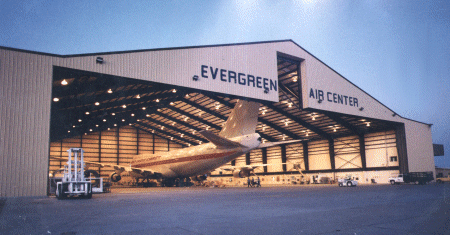As mainland China blusters and threatens, Taiwan stages its fifth Taipei Aerospace show, playing down its traditional defence slant
Andrzej Jeziorski/SINGAPORE

Despite the continuing tense political situation between Taiwan and neighbouring mainland China across the Taiwan Strait, the Taipei Aerospace Technology Exhibition 99 (TATE99) has drawn increasing representation from Taiwan's own industry.
The show, organised by Reed Exhibition Companies and the China External Trade Development Council (CETRA) and endorsed by government ministries, boasts a 29%increase in attendance from Taiwanese companies this year - 40 compared to 23 in 1997. According to Reed Exhibition president Jimmy Lau, this signals Taiwan's intent to continue developing its aerospace industry through international partnerships.
Lau insists that the threats from China and the international community's cautious response to Taiwan's dropping of the critical "one China" policy - and Beijing's belligerent response - will have no impact on the traditionally defence-orientated show. "It's going to be business as usual from the day it opens, right up to the day it closes," he says.
"The increased activity in the aerospace industry is a result of Taiwan's efforts to maintain its aviation safety through training and continued negotiations for investment in its maintenance, repair and overhaul [MRO] operations," says Lau. The exhibitors' list includes 13 aeronautics training academies and Taiwan's only commercial aircraft maintenance school, the recently licensed China Institute of Technology and Commerce.
This year's first-time exhibitors include the Aviation Safety Council, Royal Information Electronics, the National Space Programme Office and Evergreen Aviation Technologies, an aircraft maintenance joint venture between EVA Airways and General Electric.
According to information current the week before the show, 108 exhibitors were to attend from 12 countries - 12% up on the previous event, in 1997. Key international exhibitors include Aerospatiale Matra, Dassault, Lockheed Martin, Northrop Grumman, Raytheon, Rolls-Royce, Singapore Technologies and Snecma. Notable absentees include Boeing and British Aerospace.
According to Taiwan's Committee for Aviation and Space Industry Development (CASID), market potential for MRO services in the Asia-Pacific region will reach $8.3 billion by 2005. The bulk of this - about 96%- will be commercial aircraft business, with engine work accounting for about $4 billion.
The biggest customer will be Japan, with an estimated $550 million of the market, followed by China, Singapore and South Korea, with about $330 million each. Airframe maintenance work will amount to about $3.2 million, systems and components about $699.5 million. Military fleet maintenance contracts will be worth about $360 million by 2005.
Thus, CASID is trying to highlight the Taiwanese industry's capabilities, potential and geographical advantage, in the hope of turning Taiwan into an MRO hub for the region. There are 170 aerospace organisations in Taiwan today. The TATE organisers point out that, by 1997, 56 had been certificated by established original equipment manufacturers to produce and maintain around 300 products and services.
The Taipei Government has given the industry a further boost recently, by pushing ahead with plans for an aerospace industrial park in Taichung, expected to be completed in 2001. For its part, the Ministry of National Defence says it wants to transfer gradually up to $60 million worth of maintenance contracts to the private sector.
TATE99 is intended to be a forum for cultivating international industrial ties. Taiwan's industry will hope to take full advantage of the opportunities it presents to assure its long-term future, irrespective of government military programmes.
Source: Flight International























